
Johnny Appleseed Tree
Evans Property, Waynesville, North Carolina (planted July 2008)
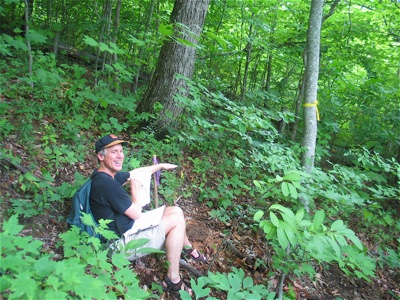
"Johnny Appleseed" (#11), with Michael Dowd 7/31/08.
|
| 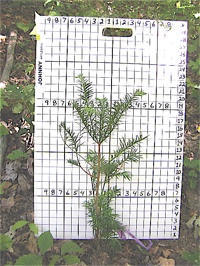
2008 |
| |
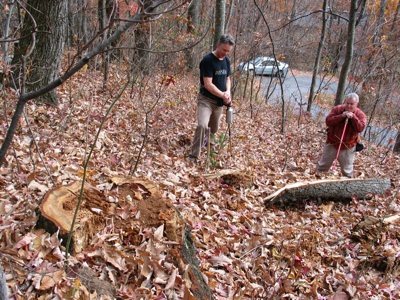
Nov 08: Michael directly behind Johnny, which narrowly
missed being crushed when a red oak toppled.
Remaining trunk of the oak was sawed off (foreground).
|
|
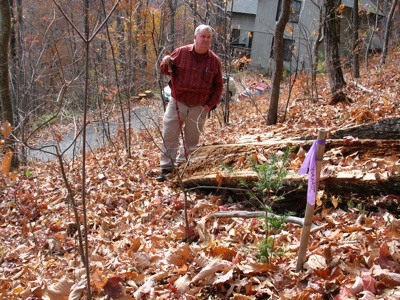
Nov 08: Johnny in foreground by purple flag.
Lee Barnes by toppled oak trunk.
|
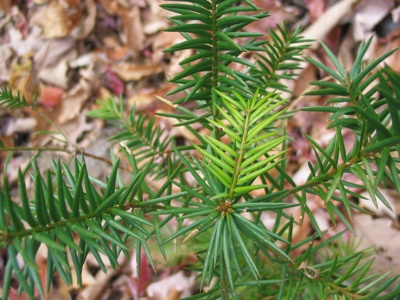
Nov 08: Several branches on Johnny show stress (light green). This part of forest is driest: Canopy is all oak/hickory.
|
| |
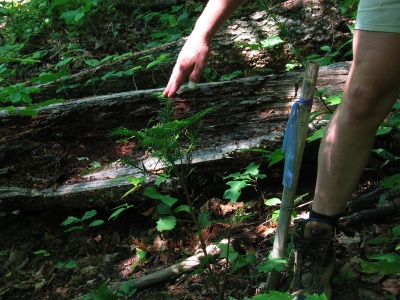
September 23, 2010: Fallen log visible behind Michael.
|
|
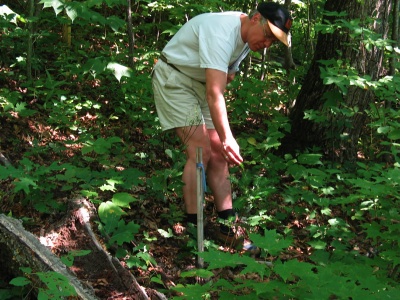
September 23, 2010: 11 am sunny; deciduous canopy
|
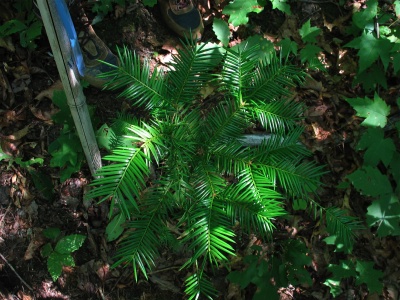
9/10: Mottled light on cloudless day.
|
|
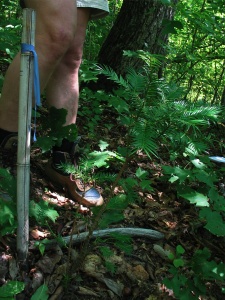
9/10: Mottled light on cloudless day.
|
|
Location is south-facing slope beneath a mostly oak-hickory canopy, with sourwood mid-canopy and lots of shrub-size sassafras, plus some azalea and crossvine. A lack of evergreen and deciduous ferns also indicates dryness. (3,400 feet elevation)
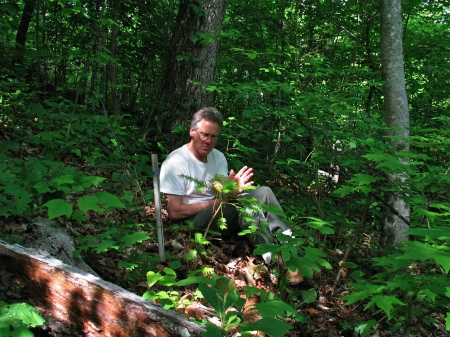 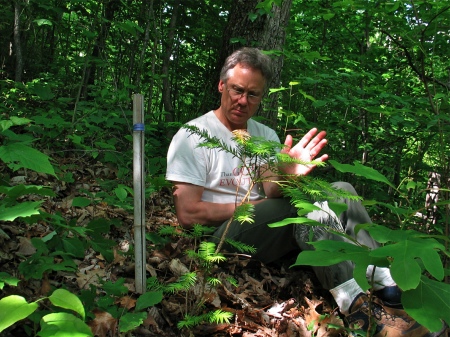
LEFT (May 18, 2012): Of the seedlings planted in 2008 on the east side of the Evans property (which has a south-facing slope and is much drier than the west side of the property, which is a very moist ravine slope that faces east), this "Johnny Appleseed" specimen is by far the healthiest. It is perhaps in a darker part of the forest, and perhaps has a healthier groundwater flow from upslope than most of the other specmens.
RIGHT (May 18, 2012): On a scale in which "Celia" specimen is rated by Lee Barnes as a 10, this specimen is rated a 9.
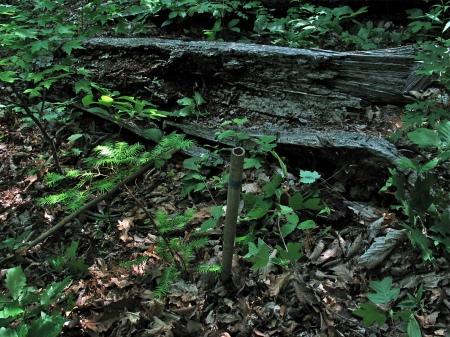 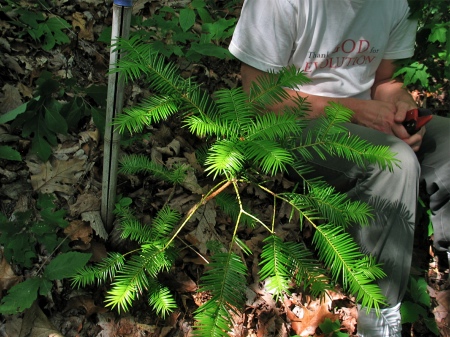
LEFT (May 18, 2012): View from upslope. Specimen is to the left of the stake; its flat top leaning left.
RIGHT (May 18, 2012):
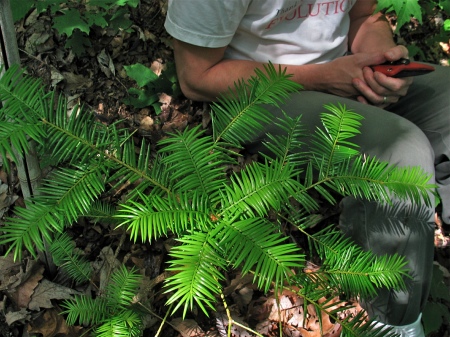 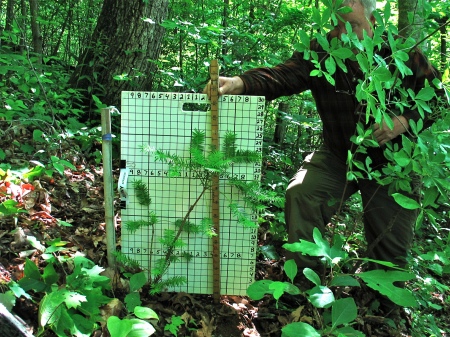
LEFT (May 18, 2012): Top-down view of the very healthy apex growth at the top of the main stem.
RIGHT (May 18, 2012): Notice the sassafras on the lower right of the photo. At least at the Evans property, sassafras is an indicator species of a generally too-dry habitat for Torreya.
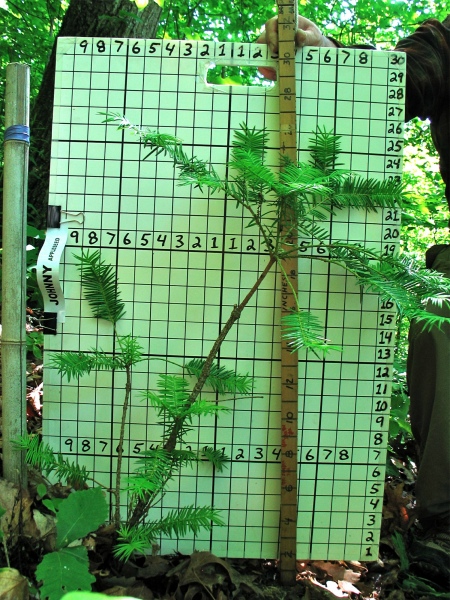 |
|
LEFT (May 18, 2012): Generally, Torreya hedges its bets by keeping a secondary stem available to grow immediately if the main stem dies or is crushed. This secondary stem is given enough energy to have fresh apical growth. |
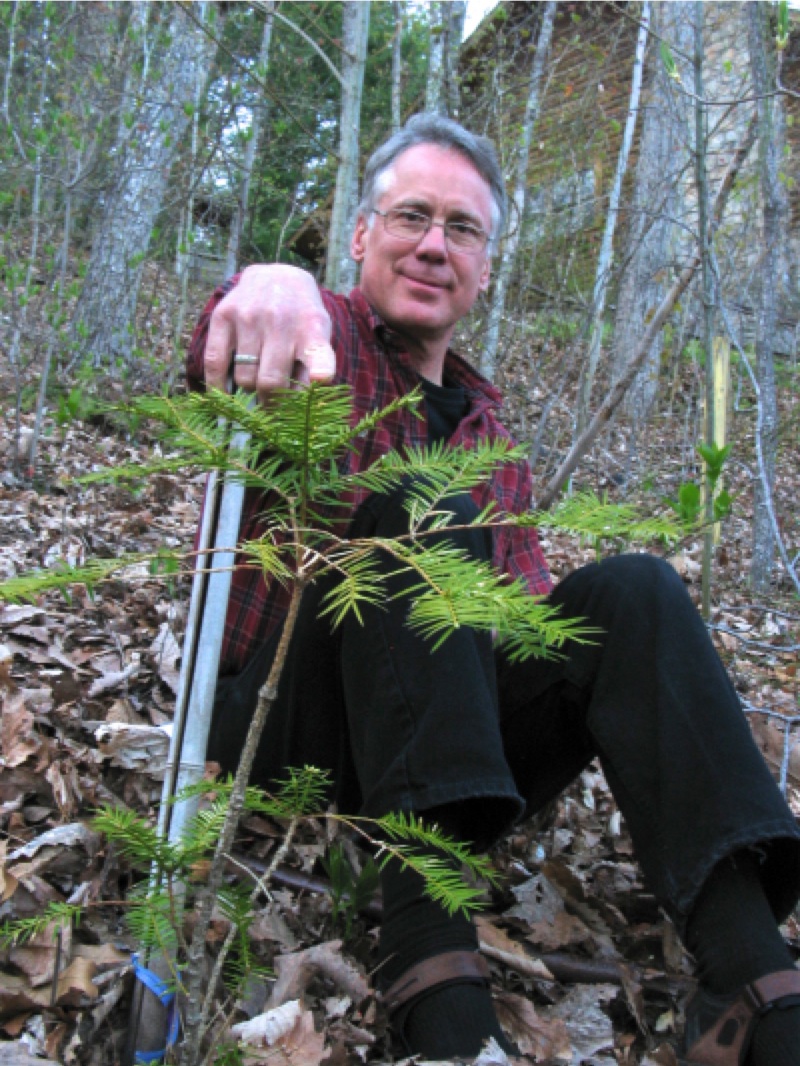 |
|
LEFT (25 April 2013): Sometime between spring 2012 and spring 2013, the whole east (driest) side of the Evans Torreya plantings took a significant downturn. Only the Johnny Appleseed tree (left and below) and the Charles Darwin tree look like they might ultimately be able to establish and grow.
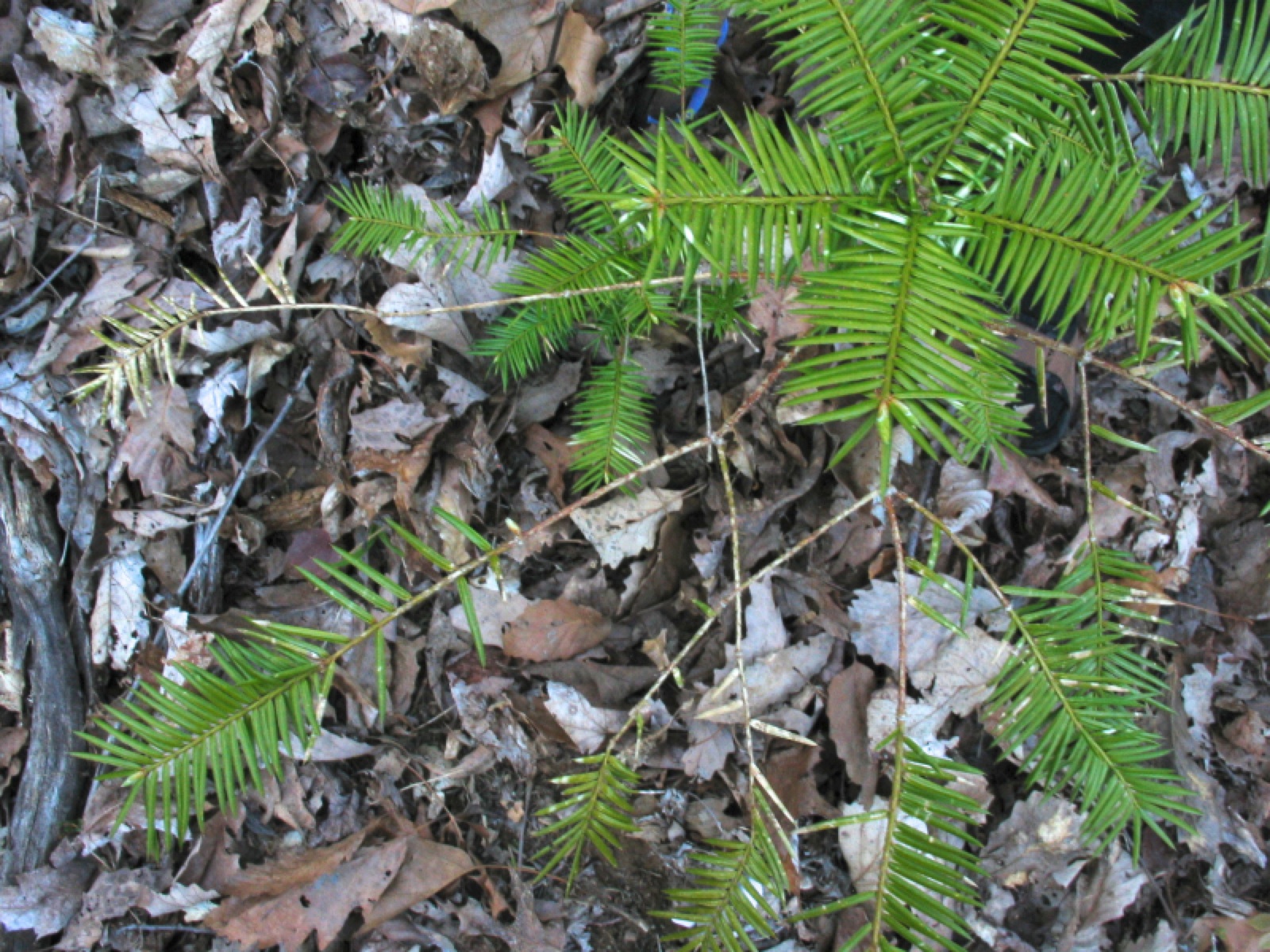
ABOVE (25 April 2013): Top-down view. In the spring 2013 assessment survey, we started collecting data on total number of leaf buds on the main and basal stems. We counted 23 leaf buds on the main stem and a total of 21 leaf buds on the 2 basal ancillary stems. The fact that Johnny is devoting so much energy to the basal growth suggests that the main stem may be doomed (or not); we are still trying to understand the habitat preferences of this species, now that we have helped "migrate" it north from lowland Florida into North Carolina mountains.
|
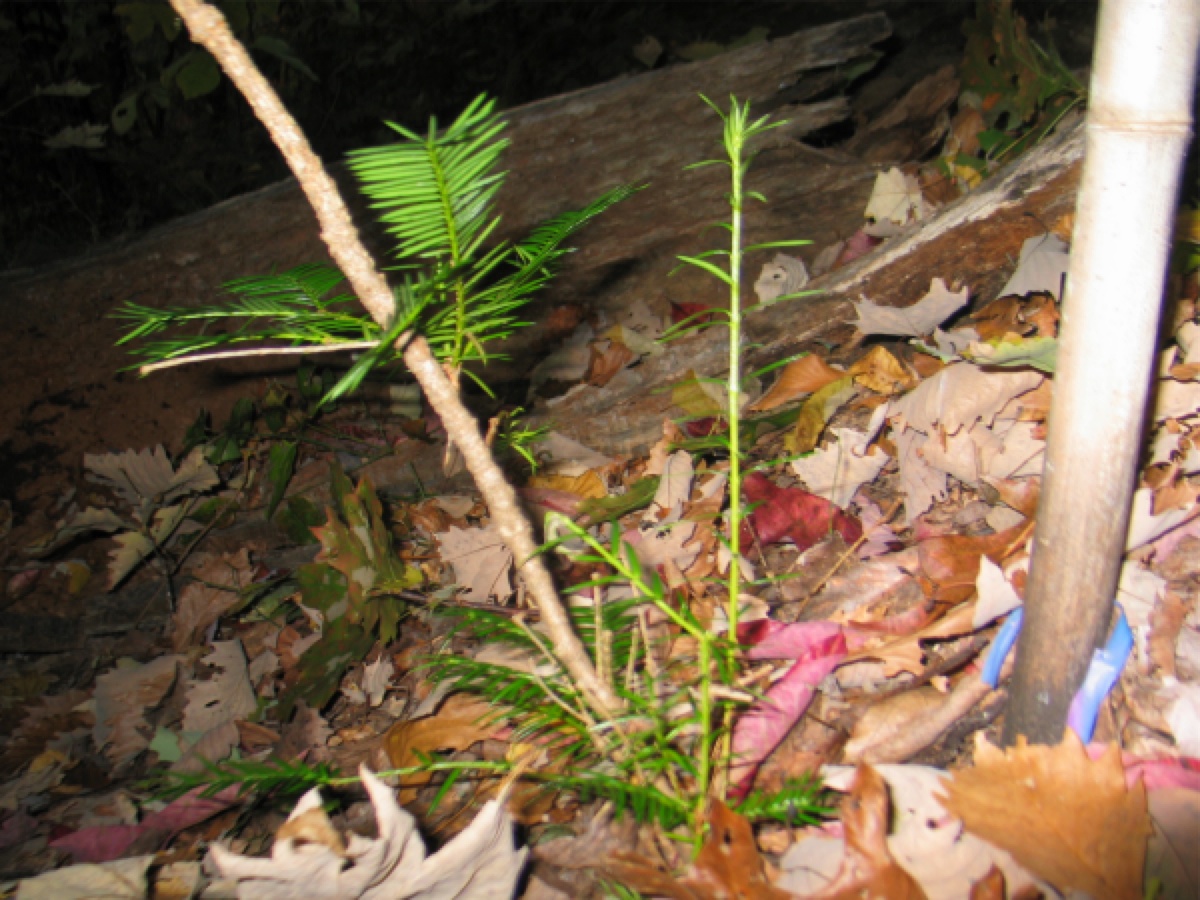 |
|
LEFT: (October 28, 2013): Owing to an unusually rainy summer, Johnny Appleseed looks very healthy. Indeed, over this past summer it has grown an entirely new and robust basal stem that is 10 inches tall. It is the farthest stem on the right. (photo by Connie Barlow) |
|



















